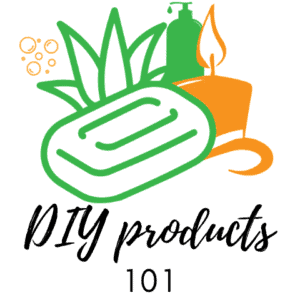Candle-making equipment is essential for both safety and quality in crafting candles. Key tools like the double boiler, thermometer, and digital scale help control the wax temperature, ensure precise measurements, and avoid common issues like uneven burning or poor scent throw. Each tool, from wick holders to pouring pots, serves a specific function that enables a more efficient and enjoyable candle-making process, especially for beginners. Using the right equipment also allows makers to experiment with various techniques and styles, including custom molds, layered candles, and different wax types.
Double Boiler: Essential for Safe Wax Melting
What is a double boiler, and why is it used in candle making?
A double boiler is a setup that uses indirect heat to melt candle wax safely, preventing it from overheating or burning. It typically consists of two stacked pots, with the bottom one holding water that heats the top pot where the wax is placed. This indirect heating process helps maintain a consistent temperature, which is crucial in candle making to avoid uneven melting and scorching.
How does a double boiler improve candle quality?
Using a double boiler provides more control over the wax temperature, which directly affects the candle’s burn quality and fragrance throw. According to a study by the University of California, Chemistry Department, heating wax beyond its optimal temperature can cause changes in scent retention, leading to a weaker fragrance. The double boiler method helps ensure that the wax remains at an ideal temperature range, enhancing the overall quality of the finished candle.
Thermometer: Monitoring Temperature for Optimal Results
Why is a thermometer necessary in candle making?
A thermometer is essential for maintaining precise temperature control while melting wax and adding fragrance. The temperature at which fragrance oils and dyes are added can affect the scent throw, color, and appearance of the candle. For example, adding fragrance at too high a temperature can cause it to evaporate, weakening the scent in the final product.
What type of thermometer is best suited for candle making?
Digital thermometers with heat-resistant probes are ideal, as they provide quick and accurate readings. According to a study by the University of Illinois Materials Science Department, waxes typically maintain fragrance quality when fragrances are added between 175°F and 185°F. Using a thermometer ensures that additives are introduced at the right temperature, preserving both the fragrance and color.
Can you make candles without a thermometer?
While it is technically possible to make candles without a thermometer, it significantly increases the risk of overheating, which can lead to poor-quality candles with an inconsistent burn. For beginners, using a thermometer is highly recommended for achieving consistent results.
Pouring Pitcher: Essential Tool for Controlled Wax Pouring
What is a pouring pitcher used for in candle making?
A pouring pitcher, typically made from heat-resistant materials like aluminum or stainless steel, allows for controlled and safe pouring of melted wax into containers or molds. Its heat-resistant handle and spout enable a steady pour, minimizing spills and ensuring even wax distribution in each candle container.
What makes a good pouring pitcher for candle making?
The ideal pouring pitcher has a heat-resistant handle, a spout designed for a slow and controlled pour, and sufficient capacity to hold the amount of wax required. A well-designed spout helps avoid overflows and bubbles, which can cause irregularities in the candle surface.
Can you make candles without a dedicated pouring pitcher?
Although it’s possible to melt and pour wax using other containers, pouring pitchers are designed specifically for candle making and offer greater control and safety. Beginners especially benefit from using one, as it ensures a more professional and polished candle finish.
Wick Holders and Centering Devices: Ensuring Even Wick Placement
Why are wick holders and centering devices important in candle making?
Wick holders and centering devices ensure that the wick remains centered while the wax solidifies, promoting an even burn. A centered wick prevents uneven melting and tunneling, which can cause the candle to burn improperly, wasting wax and reducing burn time.
What types of wick holders are available, and which are best for beginners?
There are several types of wick holders, including metal and wooden bars, clips, and adhesive dots. Wooden or metal wick bars are commonly used by beginners due to their simplicity and reusability. Clips and adhesive dots also work well, especially for smaller candles, where a more fixed placement is required.
Can you use household items as wick holders in candle making?
Yes, household items like clothespins, chopsticks, or pencils can serve as makeshift wick holders. However, dedicated wick holders are usually more effective as they are specifically designed to keep the wick centered and upright, even when exposed to the heat of the melted wax.
How do you choose the right wick holder based on candle type?
The right wick holder depends on the container or mold size and the type of wax used. For wider containers, adjustable or longer wick holders provide more stability, whereas smaller containers might only need a simple clip or bar. Multi-wick candles may require specialized holders to keep each wick evenly spaced.
